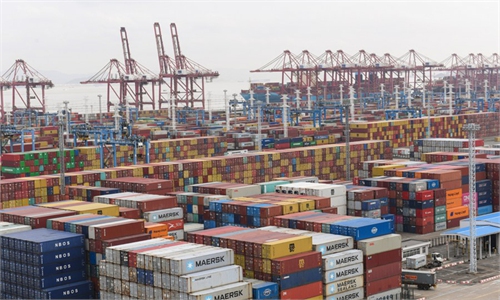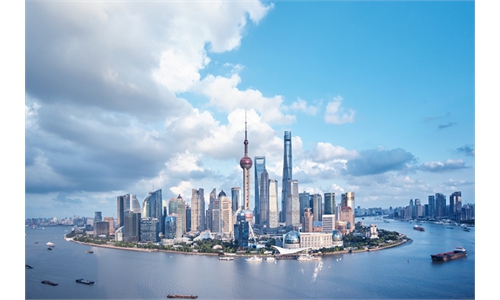
Fruits are on display at the Food and Agricultural Products Exhibition Area of the 4th China International Import Expo (CIIE) in east China's Shanghai, Nov. 6, 2021.Photo:Xinhua
Actualized foreign investment flows into China scaled a new high in 2021, Shu Jueting, spokesperson for the Ministry of Commerce, told reporters on Thursday, vowing continued efforts to make the country a long-term hotspot for foreign investment.
Last year, the country's actualized use of foreign investment - excluding that in the banking, securities and insurance industries - rose by 14.9 percent year-on-year to reach 1.15 trillion yuan, equivalent to a 20.2 percent rise in US dollar terms to $173.48 billion, setting a new record, Shu said at a regular press conference.
The actual use of foreign investment in the high-tech sector grew by 17.1 percent, while the services sector actualized 906.49 billion yuan of foreign investment, up 16.7 percent from the prior year, the ministry data showed.
Countries and regions along the routes of the Belt and Road Initiative booked a 29.4 percent rise in their investment in China, while the ASEAN countries' investment flows into the country soared 29 percent.
The new record suggests that China might remain atop the global rankings for foreign investment recipients, although a recovery in the US economy over the past year could have drawn inflows to the US as well, Bai Ming, deputy director of the international market research institute at the Chinese Academy of International Trade and Economic Cooperation, told the Global Times on Thursday.
China unseated the US as the world's largest recipient of foreign direct investment (FDI) in 2020 despite a plunge in global FDI amid the coronavirus' onslaught, according to the UN Conference on Trade and Development.
China brought in $163 billion in FDI inflows in 2020, versus $134 billion attracted by the US, the UN numbers showed. In 2019, the US attracted $251 billion in inflows, compared with $140 billion received by China.
Looking ahead, the MOFCOM aims for a more proactive and effective use of foreign investment, Shu said.
On the agenda of the ministry is a push for expanding high-level opening-up, which means the implementation of the 2021 versions of negative lists for foreign investment and the revision of the foreign investment directory by industry to steer foreign investors to make more commitments to advanced manufacturing, modern services, emerging technologies, low-carbon projects and the digital economy, the spokesperson said.
Moreover, free trade ports and free trade pilot zones, among other platforms to enable greater openness, are expected to play a larger role in appealing to foreign investors, she said, adding that major economic and trade fairs such as the China International Import Expo, the Canton Fair, and the China International Fair for Trade in Services will be tapped to attract more foreign investment.
The ministry also pledged to improve one-on-one tracking services for key foreign firms and projects, and to address issues of concern to businesses such as personnel entries into the country.
In addition, efforts are in the pipeline to remove rules that are noncompliant with the foreign investment law and its implementation regulations, ensuring foreign businesses are treated fairly.
Shu also cited the complaints mechanism for foreign firms to increase protection of the legitimate rights and interests of foreign investment and stabilize foreign investors' expectations and confidence about their investment in the country.
"We'll continue to create a market-oriented, law-based and internationalized business environment to make China a long-term hotspot for foreign investment," she said.
Global Times



